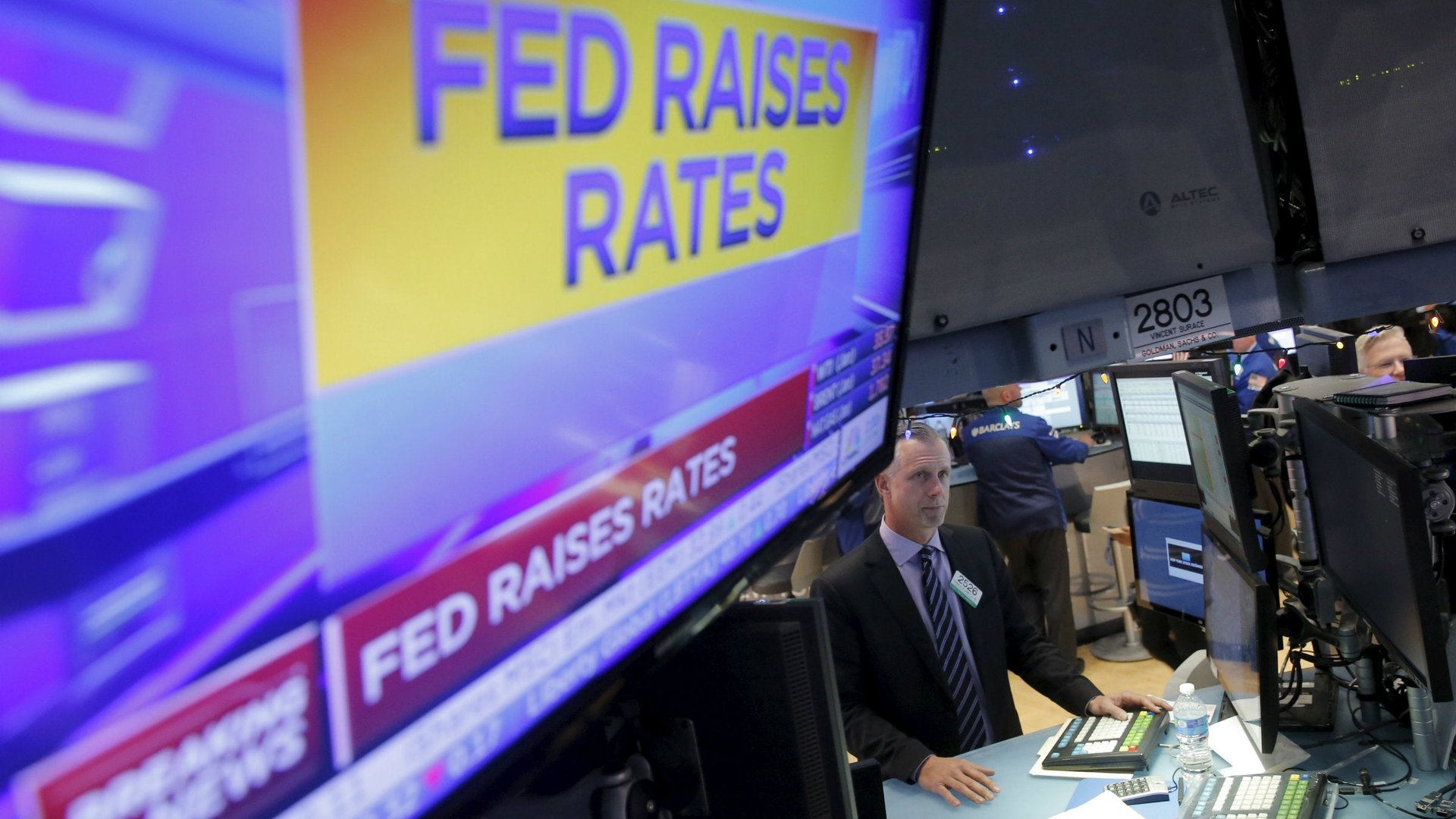How high will interest rates go? History offers some clues
After nearly nearly 35 years of bond yields steadily ticking down (and prices going up),the market has turned in the past few months. The yield on 10-year US Treasury touched its highest level since 2011 this week, at 3.09%. This “historic” move is generating anxiety among investors, as higher yields can be considered a bad sign for a jittery stock market—higher interest rates encourage a switch from stocks to bonds among risk-averse investors, they lower stock market valuations because future profits are discounted at higher rates, and stocks sensitive to borrowing costs, like homebuilders, tend to decline in a rising-rate environment.


After nearly nearly 35 years of bond yields steadily ticking down (and prices going up),the market has turned in the past few months. The yield on 10-year US Treasury touched its highest level since 2011 this week, at 3.09%. This “historic” move is generating anxiety among investors, as higher yields can be considered a bad sign for a jittery stock market—higher interest rates encourage a switch from stocks to bonds among risk-averse investors, they lower stock market valuations because future profits are discounted at higher rates, and stocks sensitive to borrowing costs, like homebuilders, tend to decline in a rising-rate environment.
But if anything, like the recent return of stock market volatility, higher rates may simply mark a return to normal market behavior. Unlike short-term interest rates, which are largely controlled by the Federal Reserve, long-term bond rates are set in the market and based on a combination of macro forecasts, risk and liquidity premiums, and expectations about future rates.
Financial economists have long assumed that bond yields “mean-revert.” A stock price can keep going up as a company becomes more valuable. But bond yields, economists presume, have some lower bound (rates can’t go far below zero without truly weird things happening) and a natural tendency to settle around some long-term average. In the case of the benchmark US 10-year bond, the average depends on the time frame. The post-war average is around 5.5%, well above current levels. Going back further—as far back as the late 19th century—brings the long-term average down closer to 4%. Since 2000, the average 10-year rate of 3.5% isn’t that far off from where it is trading now.
In short, even if bonds tend to revert to the mean, nobody knows what that long-term mean is. You could argue that the Fed is better at controlling inflation now (thank you, Paul Volcker), and less inflation risk means bond yields can stay lower than they have in the past. Or you might argue, the past 30 years were the anomaly, inflation will return, and the appropriate long-term average is based on averages that start in the 1960s or even earlier.
This is more than a statistical exercise. In some ways, interest-rate expectations matter just as much, if not more, to consumers than the current, actual interest rate. Insurance companies and pension plans make assumptions about long-term rates to estimate the size of their liabilities and the price of annuities. Their rate assumptions can determine how much you pay for insurance. Over the past 20 years, insurance companies kept getting burned when rates failed to rise and firms found that they underpriced some of their products.
Now that rates are going back up, everyone is rethinking their assumptions and asking that age-old investing question: Is this time different?